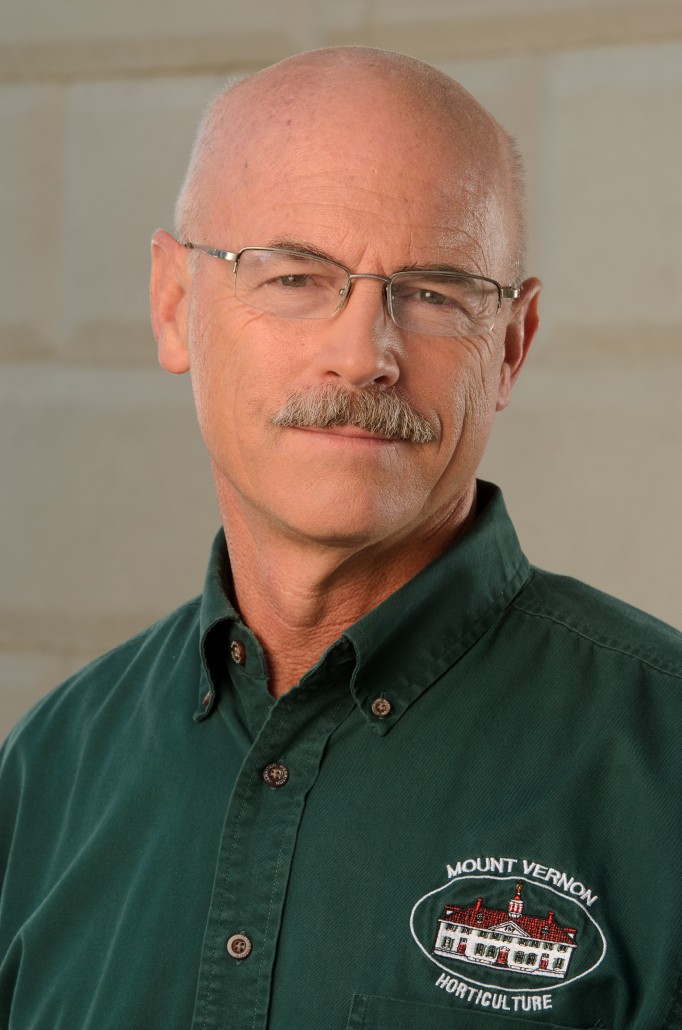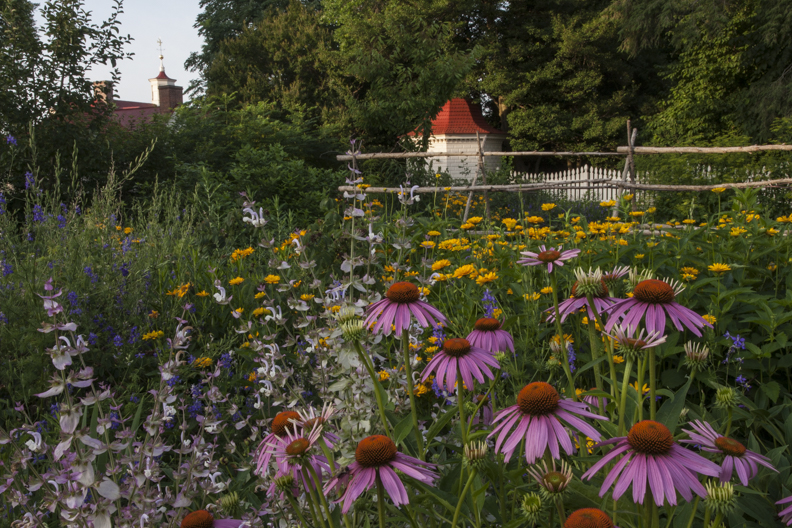Did You Know?
Q&A With Mount Vernon Director of Horticulture, Dean Norton
When students travel with us to Washington, D.C., or other east coast destinations, they often visit George Washington’s Mount Vernon. The historic home on the Potomac is an iconic American landmark and its grounds provide almost as much history as the home itself.
While at Mount Vernon, students and visitors are able to tour Washington’s extensive grounds, including his gardens and fruit groves which are carefully maintained by a staff helmed by Dean Norton, Director of Horticulture. Mr. Norton was kind enough to answer a few questions for us about his job, the gardens and grounds of Mount Vernon, and the thought that goes into preserving Washington’s beloved grounds.

WorldStrides: Tell us a about yourself! What is your background, and how did you get into historical gardening?
Norton: At the age of 16, I applied for a paper picker position at Mount Vernon. If you made it through the grueling five minute interview, you were hired to pick up trash for eight hours on the beautiful grounds of George Washington’s estate. Early on, the horticulturist took a liking to me and I took a liking to Mount Vernon and horticulture.
I received a degree in plant sciences from Clemson University and in 1978 I started full time as a boxwood gardener and, in 1980, was promoted to horticulturist, the position I still hold today. I started work at Mount Vernon on June 23, 1969 and never left.
My job as the horticulturist is to apply the latest horticultural technology to an 18th century setting. Our mission is to preserve, protect, and represent the landscape and gardens at Mount Vernon as accurately as possible to the life and times of George and Martha Washington. This requires a great deal of research and collaboration with our team of archaeologists. I am blessed and honored to be the current caretaker of Washington’s Mount Vernon, and I do believe it is one of the most accurately restored historic properties in the country.
WorldStrides: Washington paid close attention to his garden and grounds. Could you tell us more about the gardens and fruit groves that served the estate?
Norton: Washington was not a gardener. He was a farmer at heart. On January 12, 1785, he became a landscape designer and worked for a year to re-landscape his country seat to be more fitting of the man that he had become. He followed classic English naturalistic design principles. His new landscape included groves, shrubberies, wilderness areas, vistas, serpentine avenues, and ha-ha walls. The gardens on the property included kitchen, botanic, pleasure, and a fruit garden and nursery. Once his new design was completed, Washington hired a gardener who was competent in all phases of gardening. Washington gave him a free hand in working the gardens, but he was required to provide weekly reports to Washington.
The most important part of gardening was the cultivation of fruits and vegetables. This was Martha’s domain and she worked directly with the gardener to make sure there was always an ample amount of produce for the family kitchen. Visitors to Mount Vernon repeatedly commented on the hospitality of the Washington’s house and the delicious fruits and vegetables. Martha even said that “vegetables are the best part of living in the country.”

WorldStrides: Washington liked to experiment with plants, and his greenhouse was state-of-the-art at the time. Do planting experiments still happen at Mount Vernon?
Norton: Washington’s plant experiments were mainly with agricultural crops. By the end of his life he had experimented with over 70 different types of grasses, grains, produce, and combinations. He was looking for plants that could thrive in infertile ground, that could bring a profit at harvest, and many times that could be used as a green manure and be plowed under after a season of growth.
Washington loved receiving exotics or plants he wasn’t familiar with that grew in other regions of the country. He would plant them in his botanical garden to test to see if the plants could survive the harshness of Virginia winters and summers. A great gift to bring or send to the General would be seed or a plant that he wasn’t familiar with. He loved to include new and interesting items within his landscape.
His greenhouse was copied from the greenhouse owned by Margaret Carroll on her property, Mount Clare. His collection of semi-tropical and tropical plants started with a gift of tubbed plants from her greenhouse. These tubbed plants were placed throughout the pleasure garden during the growing season to delight his guests strolling the garden paths. Our mission today is to grow the same type of plants that Washington and his gardeners grew in 1799, the year of Washington’s death. So, we do not perform plant experiments, but research to make sure we are growing appropriate 18th century fruits vegetables, flowers, and herbs.
WorldStrides: What does Mount Vernon do with the produce grown on the estate now?
Norton: In the 18th century, the Washingtons expected an abundance of everything from the garden enclosures. The Washingtons had to feed a lot of visitors, in fact George Washington called Mount Vernon a well-resorted tavern entertaining over 600 guests a year by the end of his life.
Today, we garden as they did 200 years ago, but the produce harvested is used in two different ways. Annually, we donate several thousand pounds of produce to the local food bank for those less fortunate. We are now also offering two special farm-to-table evenings that include a tour of the historic gardens and a dinner highlighting produce from the gardens. We also are beginning to offer more of our harvest on a consistent basis to our restaurant, The Mount Vernon Inn.

WorldStrides: Today’s gardening tools such as watering cans and spades are pretty similar to those used in Washington’s time, but technology has certainly evolved. How do technological advances help with preserving the Mount Vernon gardens?
Norton: Gardening today has changed little since the 18th century. As we dig and cultivate the ground, plant and harvest the plants, deal with the blood, sweat, and sometimes tears, we think of our gardening brethren 200 hundred years past. We are bonded by our wonderful profession and the thrill from what we can grow and produce from the earth. In fact, Philip Miller’s Gardens Kalendar from 1775 would be an excellent resource for today’s gardener.
Of course, we know more about the science of soils, plant mechanisms, fertility, etc., but in the end, we are gardening as they once did, achieving the same results regardless of the century. Astronomical advances have been made in the field of archaeology. Their exploration of the soil and findings are often all that is left as far as telling us what was in that geographic location during Washington’s time, allowing us to more accurately return garden and landscape features to their appearance in 1799.
WorldStrides: How are you preparing the gardens for spring?
Norton: The winter season is the time to prepare for the spring garden. We clean the beds of summer and fall plantings, leaves, and debris, and after planting whatever spring bulbs we desire, we add copious amounts of onsite-generated composted leaves, grass, and animal byproducts and turn the soil. During the dormant season, we prune all of the fruit trees and then we wait the anticipated wonder of the rebirth of all of the historic gardens.
We delight in the joy that the gardens bring to our million visitors a year and, although we work hard during the growing season, it is indeed a labor of love. The garden and landscape team of Mount Vernon Estate love what we do and take great pride in caring for the green side George and Martha Washington’s home.
Learn more about our trips to Mount Vernon and Washington, D.C.
Related Articles

Around the World in 10 Holiday Cookies
When students travel with us to Washington, D.C., or other east coast destinations, they often visit George Washington’s Mount Vernon. The historic home on the Potomac is an iconic American landmark...

The 2024 WorldStrides Student Photo & Video Contest Gallery
When students travel with us to Washington, D.C., or other east coast destinations, they often visit George Washington’s Mount Vernon. The historic home on the Potomac is an iconic American landmark...

Girl Scouts: Costa Rica Tour
When students travel with us to Washington, D.C., or other east coast destinations, they often visit George Washington’s Mount Vernon. The historic home on the Potomac is an iconic American landmark...

2024 Mérida Pride Parade
When students travel with us to Washington, D.C., or other east coast destinations, they often visit George Washington’s Mount Vernon. The historic home on the Potomac is an iconic American landmark...


